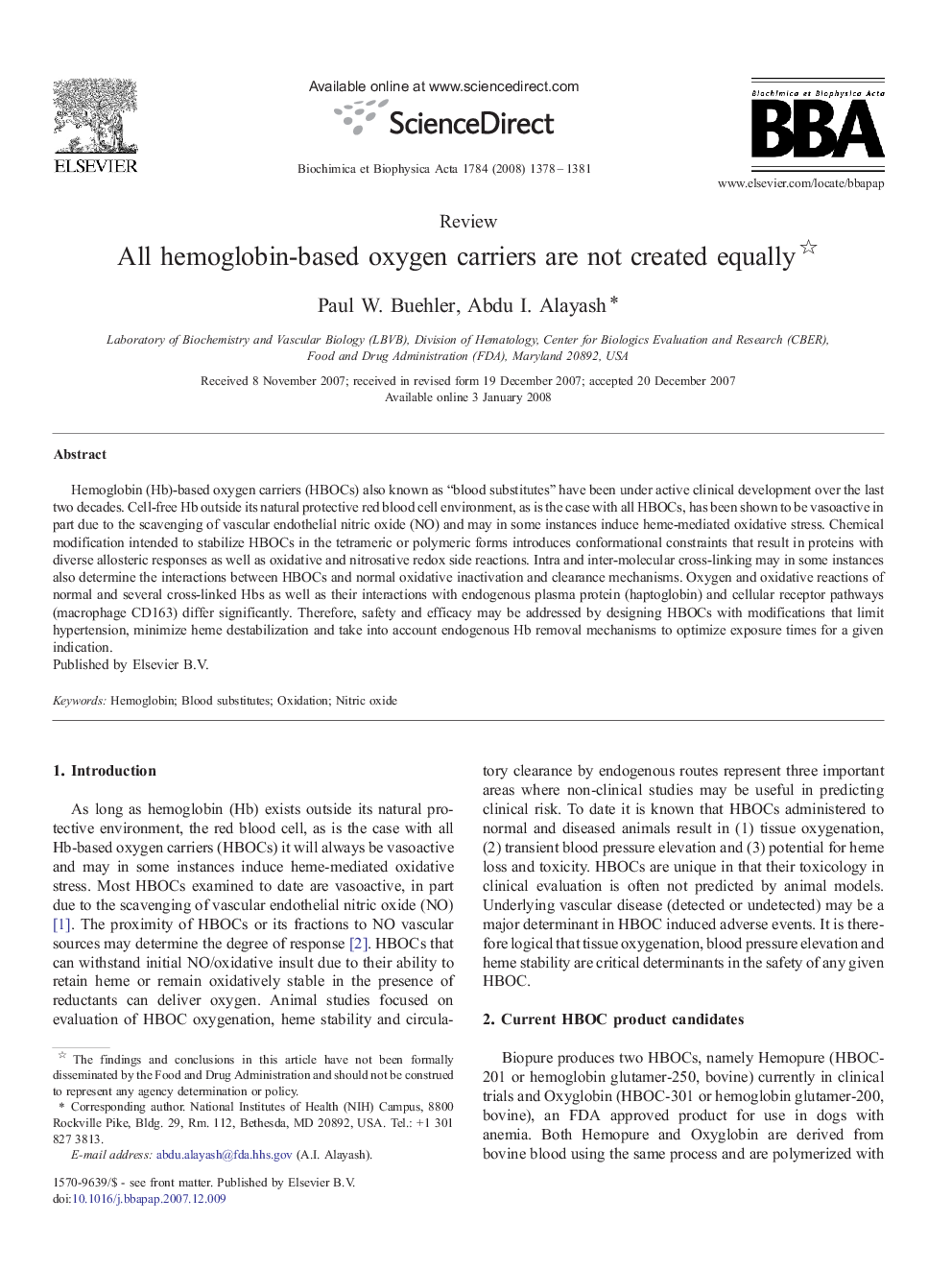| Article ID | Journal | Published Year | Pages | File Type |
|---|---|---|---|---|
| 1179035 | Biochimica et Biophysica Acta (BBA) - Proteins and Proteomics | 2008 | 4 Pages |
Hemoglobin (Hb)-based oxygen carriers (HBOCs) also known as “blood substitutes” have been under active clinical development over the last two decades. Cell-free Hb outside its natural protective red blood cell environment, as is the case with all HBOCs, has been shown to be vasoactive in part due to the scavenging of vascular endothelial nitric oxide (NO) and may in some instances induce heme-mediated oxidative stress. Chemical modification intended to stabilize HBOCs in the tetrameric or polymeric forms introduces conformational constraints that result in proteins with diverse allosteric responses as well as oxidative and nitrosative redox side reactions. Intra and inter-molecular cross-linking may in some instances also determine the interactions between HBOCs and normal oxidative inactivation and clearance mechanisms. Oxygen and oxidative reactions of normal and several cross-linked Hbs as well as their interactions with endogenous plasma protein (haptoglobin) and cellular receptor pathways (macrophage CD163) differ significantly. Therefore, safety and efficacy may be addressed by designing HBOCs with modifications that limit hypertension, minimize heme destabilization and take into account endogenous Hb removal mechanisms to optimize exposure times for a given indication.
